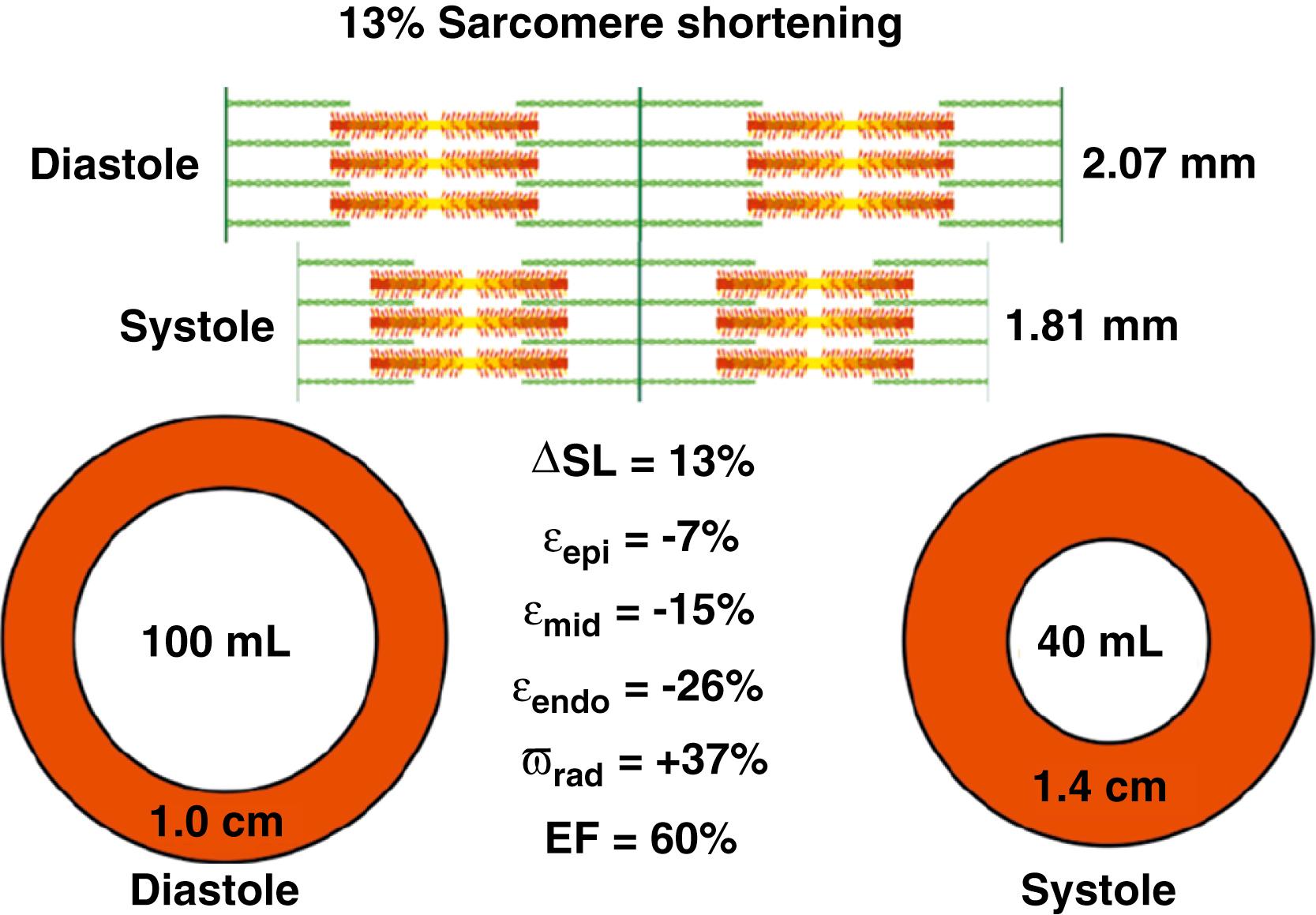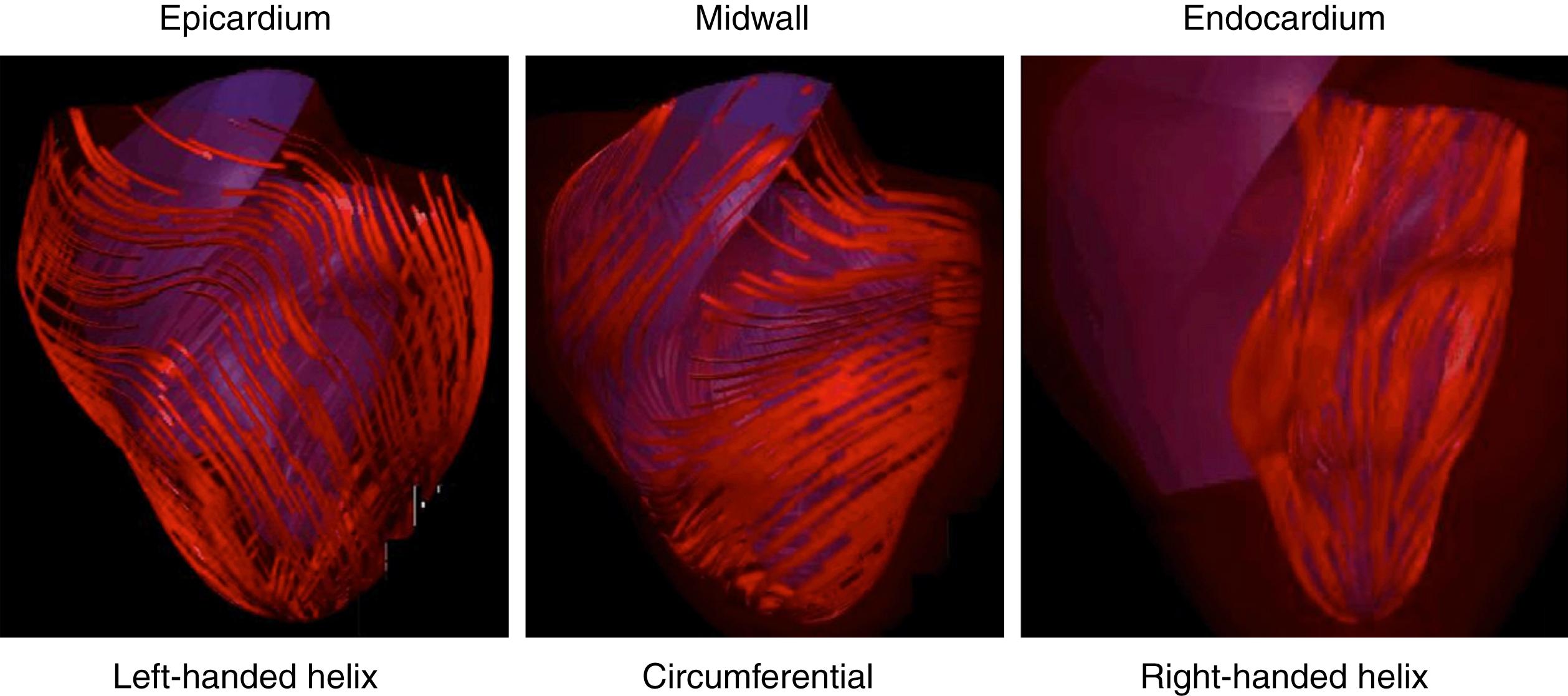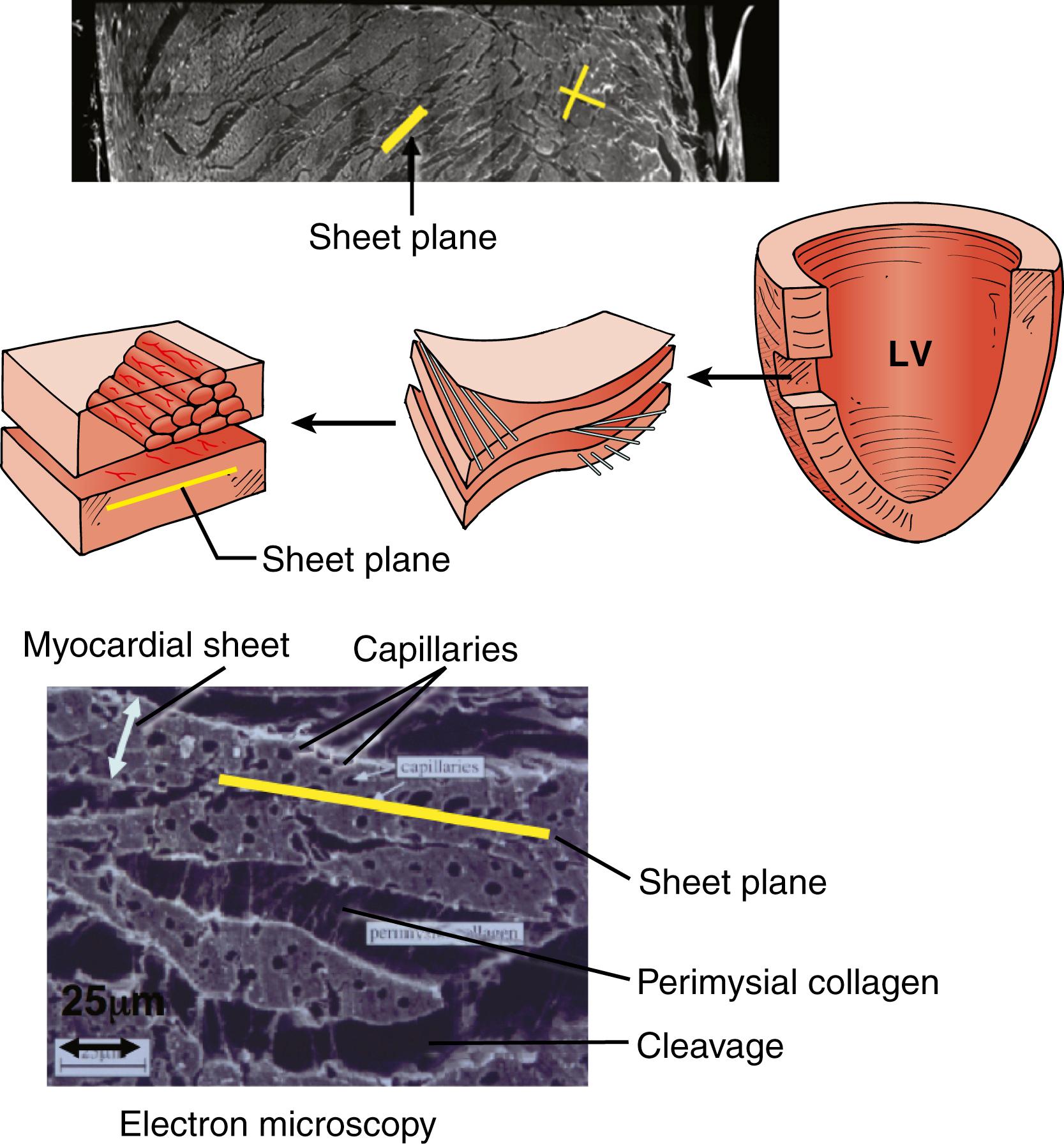Physical Address
304 North Cardinal St.
Dorchester Center, MA 02124
The left ventricle is a hollow muscular shell that is capable of ejecting more than 100 mL of blood at over 200 mm Hg of pressure and then filling with the same quantity of blood at less than 10 mm Hg and in less than 100 ms during exercise. This action becomes all the more remarkable when one realizes that the fundamental contractile unit of the cardiac myocyte, the sarcomere, is only capable of shortening by about 13%, whereas the ventricle shortens in length and circumference by about 20% with more than 40% radial thickening, leading to the ejection of more than 60% of the end-diastolic volume. The transduction of this small degree of sarcomere shortening into a 60+% ejection fraction (EF) is only possible because of a very specific counterwoven double helix arrangement of muscle fibers.
Before a discussion of the actual anatomy, consider an alternative, simpler arrangement consisting only of fibers coursing circumferentially around the cavity. The sarcomeres generate force most efficiently in a narrow range around 13%, but as shown in Fig. 23.1 , to reduce the cross-sectional area by 60% with an incompressible material such as myocardium requires fiber shortening of about 15% at the midwall (near optimal for the sarcomere), but at the epicardium, there is only 7% shortening, too little for optimal force generation. Furthermore, at the endocardium, conservation of mass requires the fibers to shorten by 26%, well beyond what a sarcomere can do, requiring inefficient crumpling of the fibers. To generate ejection with pressure requires an arrangement of myofibrils that allows each sarcomere to contribute optimally to contraction.

In reality, as Fig. 23.2 demonstrates, the left ventricular (LV) myofibrils are arranged roughly in a left-handed helix in the epicardium and a right-handed helix in the endocardium, with a circumferential arrangement in the midwall. These are not discrete layers but rather show a continuous gradation from roughly +60 degrees to −60 degrees (relative to the circumferential midwall fibers) as one goes from endocardium to epicardium. Although this helps to normalize sarcomeric shortening, a further feature is required, with the fibers arranged in discrete sheets defined by perimysial collagen so that during systole, they can tilt inward, allowing for much greater regional deformation while keeping sarcomere shortening in the optimal zone ( Fig. 23.3 ).


The counterwoven helical architecture contributes to ventricular torsion, the wringing motion that helps to eject blood while also storing energy in the interstitium and the sarcomeric molecular spring, titin, to be released during diastole to assist in the low pressure filling of the heart. , The left-handed fibers in the epicardium, being farther from the ventricular centroid, have a mechanical advantage over the right-handed endocardial fibers and thus can rotate the apex counterclockwise (as viewed in the typical short-axis echo plane) while pulling the base in a clockwise direction, generating about 13 to 15 degrees of twist at rest.
The resulting left ventricle is a complex ellipsoid structure that is characterized by one major and two minor axes. The two minor axes, although similar in length, are not identical because the axis lying in the septolateral (horizontal) plane is shorter than the one lying in the intercommissural (vertical) plane because of lower curvature of the interventricular septum. During cardiac contraction, after initially becoming more spherical, the left ventricle becomes more elliptical at end-systole. Hearts with systolic failure characteristically become more spherical. LV geometry is also influenced by right ventricular (RV) pathology—characteristically, septolateral dimensions decrease in the setting of RV pressure overload. These changes are relevant because flattening of the septum elicits profound changes in regional LV contractility caused by interference with Starling mechanism. ,
Become a Clinical Tree membership for Full access and enjoy Unlimited articles
If you are a member. Log in here